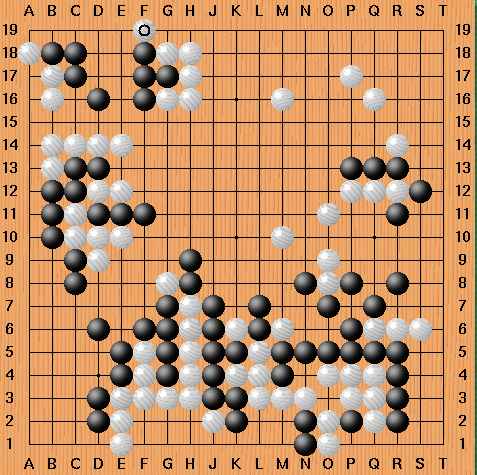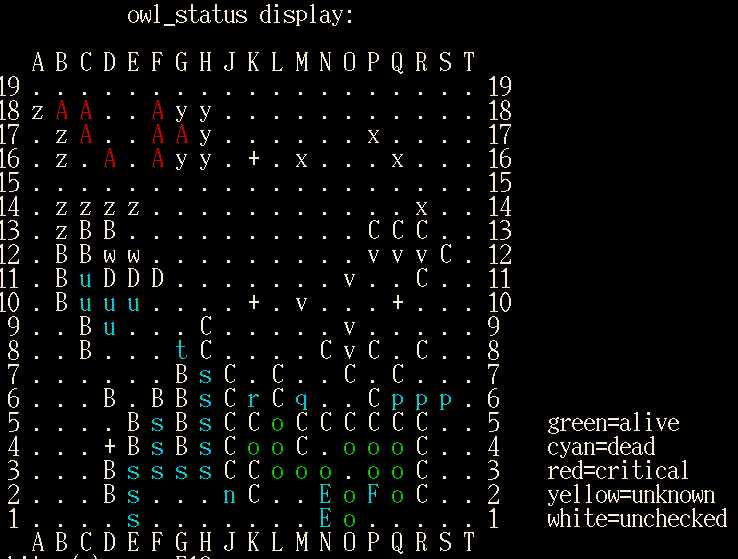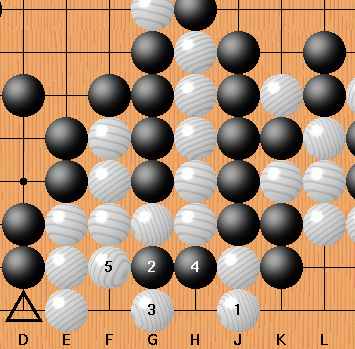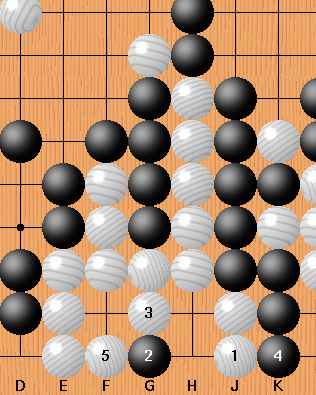

GNU Go played at F19. Running gnugo --quiet -l tune.sgf -L132 -T to get the colored display, we see that GNU Go thinks the top group is critical and the bottom group is dead.

Both opinions are wrong, since the top group is at worst seki and J1 will save the bottom group. We'll concentrate on the bottom one.
The move at J1 is the only move to save the bottom group. Note that if the liberty at D1 disappears, the move at J1 no longer works and the bottom group is dead.
This position is a variant of the so-called comb formation which is a basic life and death situation in the game of Go. The comb formation is this position:

Every Go player should know that the comb formation is alive.
Returning to the game position, there are a couple of variations that should be considered.

This variation shows why the liberty at D1 is needed. If it gets filled, this attack would kill. Another variation:

The two points G1 and G2 are miai. This means that if B occupies one, then W must occupy the other. With this in mind, we must tune the owl code so that GNU Go finds the relevant variations needed to understand that J1 lives.
Continue to the Next page.
Return to [ GNU's home page | the GNU Go development page ].
Please send comments on these web pages to webmasters@www.gnu.org, send other questions to gnu@gnu.org.
Copyright © 1999, 2001 Free Software Foundation, Inc., 51 Franklin Street, Fifth Floor, Boston, MA 02110-1301, USA
Verbatim copying and distribution of this entire article is permitted in any medium, provided this notice is preserved.
Updated: $Date: 2006/11/23 10:12:40 $ $Author: ramprasadb $